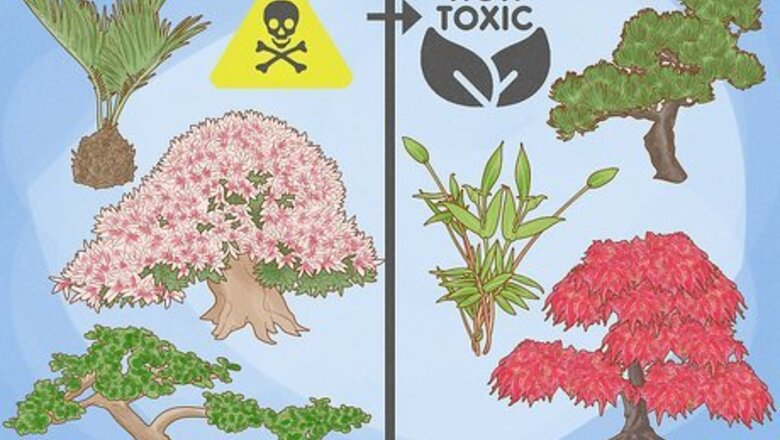
views
- Sago palm, azalea, jade, and boxwood bonsai trees are all toxic to cats.
- Cherry, plum, and ficus bonsai trees are dangerous if cats nibble on them.
- Grow juniper, bamboo palm, or prayer plant for non-toxic bonsai alternatives.
- Contact a vet right away if your suspect your cat got into a toxic bonsai tree or if they show signs of poisoning.
Are bonsai trees toxic to cats?
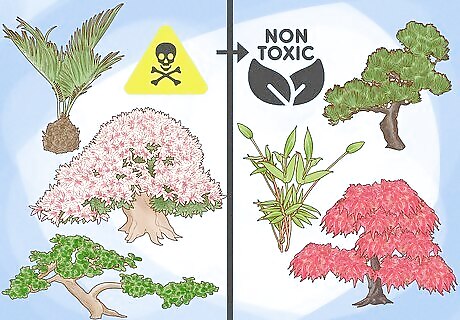
Some bonsai trees are poisonous, but others are not. Since bonsai is a style of growing smaller versions of a plant, there are many potential species a tree could be. A wide variety of bonsai plants have developed toxic sap, leaves, or berries to protect themselves from animals. These dangerous plants can all potentially be lethal depending on how much your cat ingests, but there are still some non-toxic species you’re able to grow that are safe for your feline friend to chew on. Avoid toxic bonsai trees altogether since you can never guarantee that your cat won’t chew on them. If you suspect your cat has been eaten parts of a bonsai tree, look for any torn leaves, broken branches, or teeth marks on the trunk. Common signs of poisoning are sluggishness, unsteadiness, heavy breathing, drooling, diarrhea, vomiting, and seizures. Contact your vet immediately if you notice your cat has any of these symptoms. Take note of the name of the plant your cat bit or take a photo. If you can, quickly determine how much your cat consumed before leaving for the vet (all of this information will help with their vet care).
Poisonous Bonsai Trees
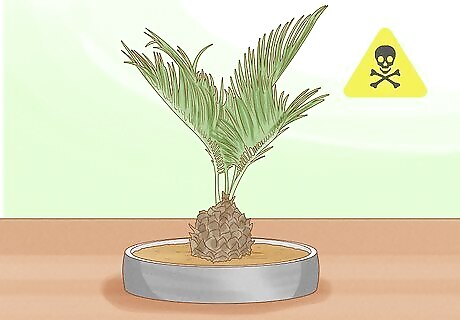
Sago palm Every part of this palm is toxic to a cat, including the seeds and fronds. If your cat ingests anything from a sago palm, watch for symptoms of poisoning like vomiting, bloody stools, or increased thirst. Without immediate treatment, sago palms could lead to blood clots, liver damage, or death.
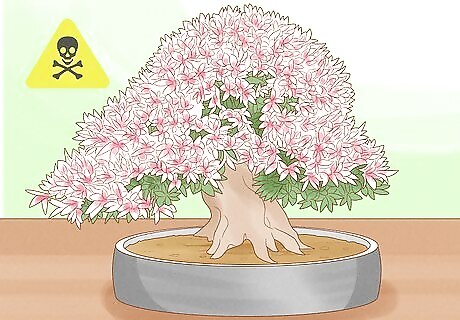
Azalea Azalea, or rhododendron, bonsais are beautiful flowering shrubs, but all parts of the foliage are poisonous to cats, and even humans. In cats, azaleas can cause vomiting, diarrhea, weakness, or cardiac failure within just a few hours.
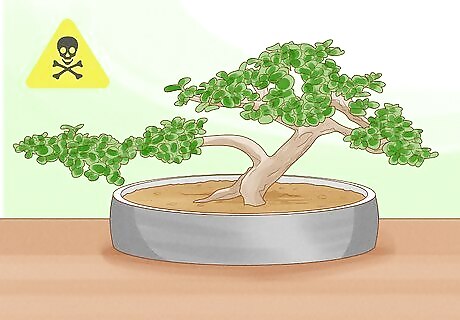
Jade Jade bonsai trees may also be sold as baby jade or rubber plants, but they can make your cat vomit or lose coordination if any part of them is ingested. If your cat ingests a lot of jade, it could be lethal.
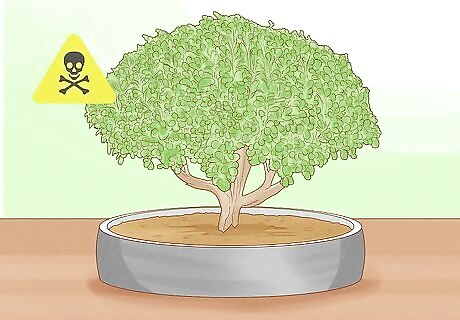
Boxwood Boxwood is an evergreen shrub that can be trained for bonsai, but it could cause diarrhea and vomiting if your cat started chewing on the leaves or branches. Typically, the bitter flavor will deter your cat, but large doses can be fatal.

Cherry Anything off of a cherry bonsai tree is toxic since the leaves naturally produce cyanide. If your cat gets into a cherry bonsai, it could quickly cause them to lose coordination and have convulsions.
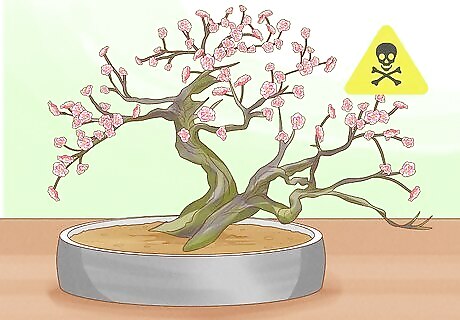
Plum The stems, leaves, and seeds on a plum bonsai tree can contain cyanide, especially where the plant is wilted. If a cat ingests any of the pieces, it could cause dilated pupils, difficulty breathing, and shock.

Fig & ficus Fig and ficus bonsai trees are easier to grow, but they produce sap that upsets your cat’s stomach when they chew on the leaves or branches. If your cat keeps chewing on them, it could lead to vomiting and diarrhea.
Cat-Safe Bonsai Trees
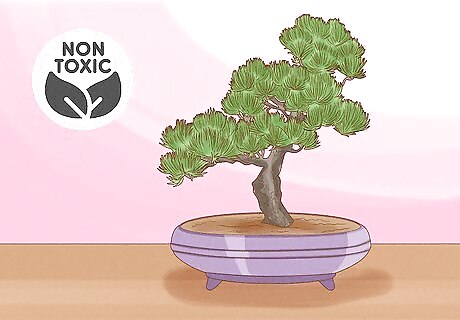
Juniper Juniper is an evergreen shrub with small blue-green needles and berries, and it’s one of the most common bonsai trees. Since it’s non-toxic, it’s perfectly safe to grow around your feline friend without any worry.
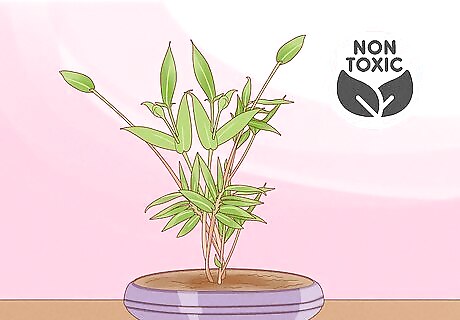
Bamboo palm If you want to have a miniature bamboo forest on your tabletop, this bonsai palm is the perfect addition to your home. With small fan-shaped leaves and tall, skinny trunks, bamboo palm bonsai really makes an eye-catching houseplant.
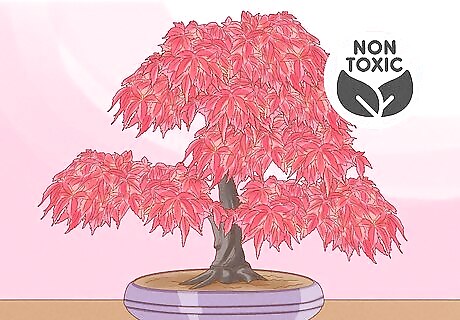
Maple If you want the beauty of a maple tree indoors, this non-toxic bonsai tree is great for growing around your pets. The leaves on a maple bonsai tree may even change colors between seasons so you can have a vibrant houseplant year-round.
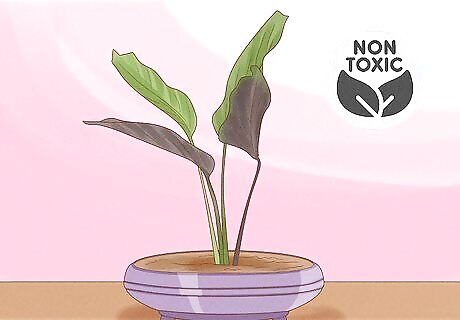
Prayer plant These tropical plants have vibrant, striped leaves that are sure to stand out in your home. Prayer plant bonsai trees have large, prominent trunks so each one has a unique look.
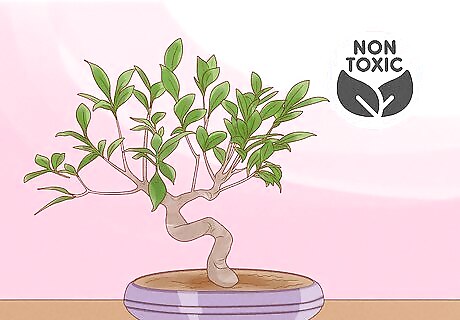
Peperomia Peperomia comes in multiple varieties, so it may have shiny leaves that are one color or multicolored striped leaves. All the varieties are safe around your cat, so just choose the one you think looks best.
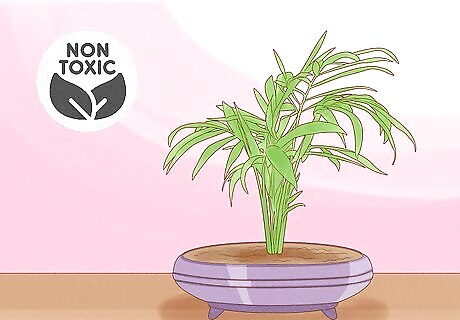
Parlor palm Parlor palm bonsai trees create a mini tropical paradise with their bright green fronds and trunks. Since they’re safe for cats, they’re the perfect addition to your home.
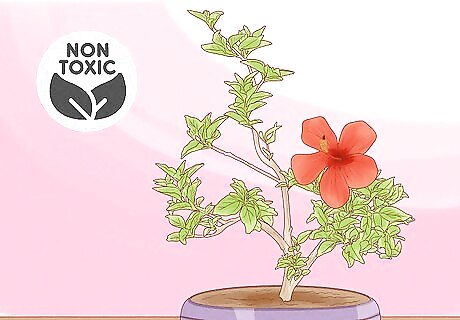
Hibiscus If you want to have bright pink or orange flowers in your home, try your hand at growing a hibiscus bonsai tree. The entire plant is non-toxic, so it’s okay if your cat stops to smell (or chew on) the flowers.
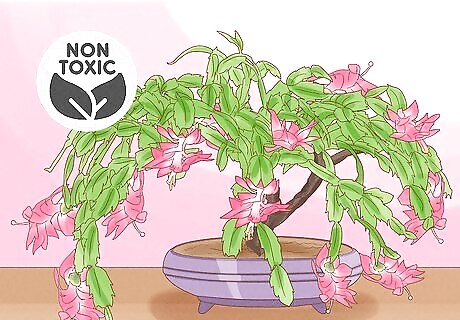
Christmas cactus If you always wanted to grow a cactus but didn’t want to deal with sharp spines, a Christmas cactus bonsai plant will bring a little bit of the desert into your home. This cactus grows stunning pink or red flowers to add a pop of color once a year.
Keeping a Cat Away from Bonsai Trees
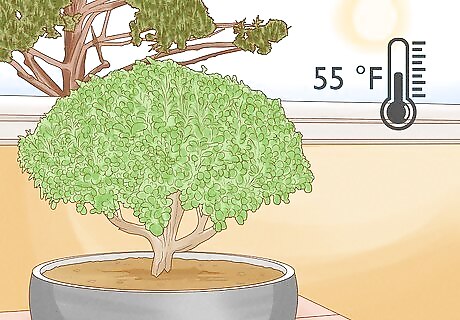
Grow the bonsai tree outside. If you have an indoor-only cat, set your bonsai tree out on a patio or deck during the warm summer months. Leave your bonsai tree outside as long as the temperatures stay above 55 °F (13 °C) in your area. Bonsai trees are sensitive to frost, so never leave them out when temperatures dip any colder.
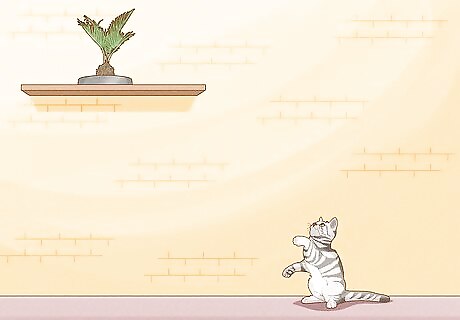
Place the bonsai tree on a high shelf. Choose a shelf that doesn’t have an easy way for your cat to climb up to your bonsai tree. Make sure your cat can’t jump up to the shelf from the ground or any nearby furniture to ensure they can’t reach the bonsai tree.

Use citrus repellent around the plant. Cats have sensitive noses and hate the smell of citrus. Try leaving citrus peels or spritzing a little citrus essential oil around the base of the pot. When your cat comes up to investigate, the intense smell will drive them away.

Grow cat grass nearby. Keep your cat out of your plants with a few plants of their own. Set up a small area by your houseplants where you can give them cat grass to get into. That way, they’ll be too distracted to get into your bonsai tree.


















Comments
0 comment